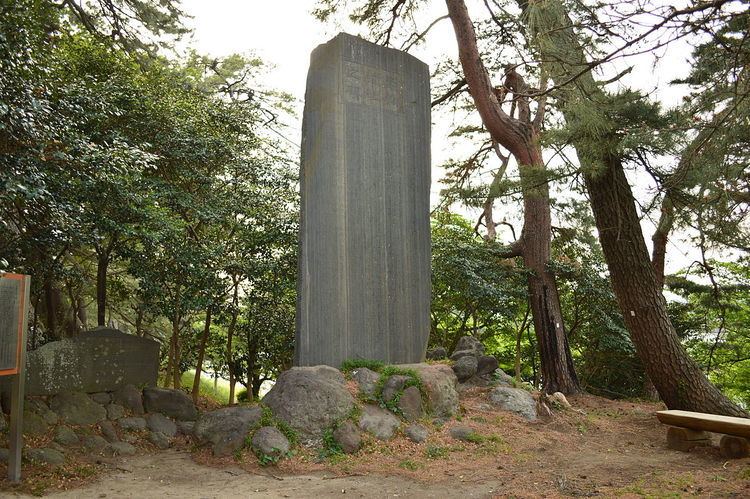 | ||
Maebashi Domain (前橋藩, Maebashi-han) was a feudal domain under the Tokugawa shogunate of Edo period Japan, located in Kōzuke Province (modern-day Gunma Prefecture), Japan. It was centered on Maebashi Castle in what is now part of the city of Maebashi, Gunma.
Contents
History
Maebashi was the location of an important fortification in the Sengoku period on a strategic junction of the Tone River with the main highway from Edo to Echigo Province and the Sea of Japan with the Nakasendō highway connecting Edo with Kyoto. The area was hotly contested between the Uesugi clan and the Takeda and Odawara Hōjō clans.
After Tokugawa Ieyasu took control over the Kantō region in 1590, he assigned the area to his trusted general, Hiraiwa Chikayoshi, with revenues of 33,000 koku. Following the establishment of the Tokugawa shogunate, the Hiraiwa were transferred to Kōfu Castle and were replaced by a branch of the Sakai clan, formerly daimyo of Kawagoe Domain. The Sakai ruled over nine generations from 1601 to 1749, during which time the domain was gradually enlarged to 150,000 koku. The 2nd daimyo, Sakai Tadayo and 4th daimyo, Sakai Tadakiyo served as tairō within the shogunal administration.
After the Sakai were transferred to Himeji Domain, they were replaced the a branch of the Matsudaira clan from Echizen Province, and Matsudaira Tomonori ruled from 1749 to 1767. However, erosion from the Tone River and repeated flooding continued to plague the castle, and in 1767 Matsudaira Tomonori decided to relocate his seat from Maebashi to Kawagoe Castle, demoting Maebashi Domain to a detached territory of Kawagoe Domain.
Towards the Bakumatsu period, the growing prosperity and economic importance of Maebashi due to the silk trade led to the local townspeople petitioning their lord for his return to Maebashi Castle. The Tokugawa shogunate also looked to Maebashi as a possible refuge should Edo be attacked by the western powers, and supported the move. A new Maebashi castle was completed in 1866, and the Matsudaira clan relocated back to Maebashi in 1867. During the Boshin War, Maebashi Domain was quick to side with the imperial cause. However, the domain’s detached exclave in Futtsu sided with the Tokugawa and one of the rōjū of the parent domain in Maebashi was forced to commit seppuku in atonement.
After the end of the conflict, with the abolition of the han system in July 1871, Maebashi Domain became “Maebashi Prefecture”, which later became part of Gunma Prefecture.
Holdings at the end of the Edo period
As with most domains in the han system, Maebashi Domain consisted of several discontinuous territories calculated to provide the assigned kokudaka, based on periodic cadastral surveys and projected agricultural yields,
